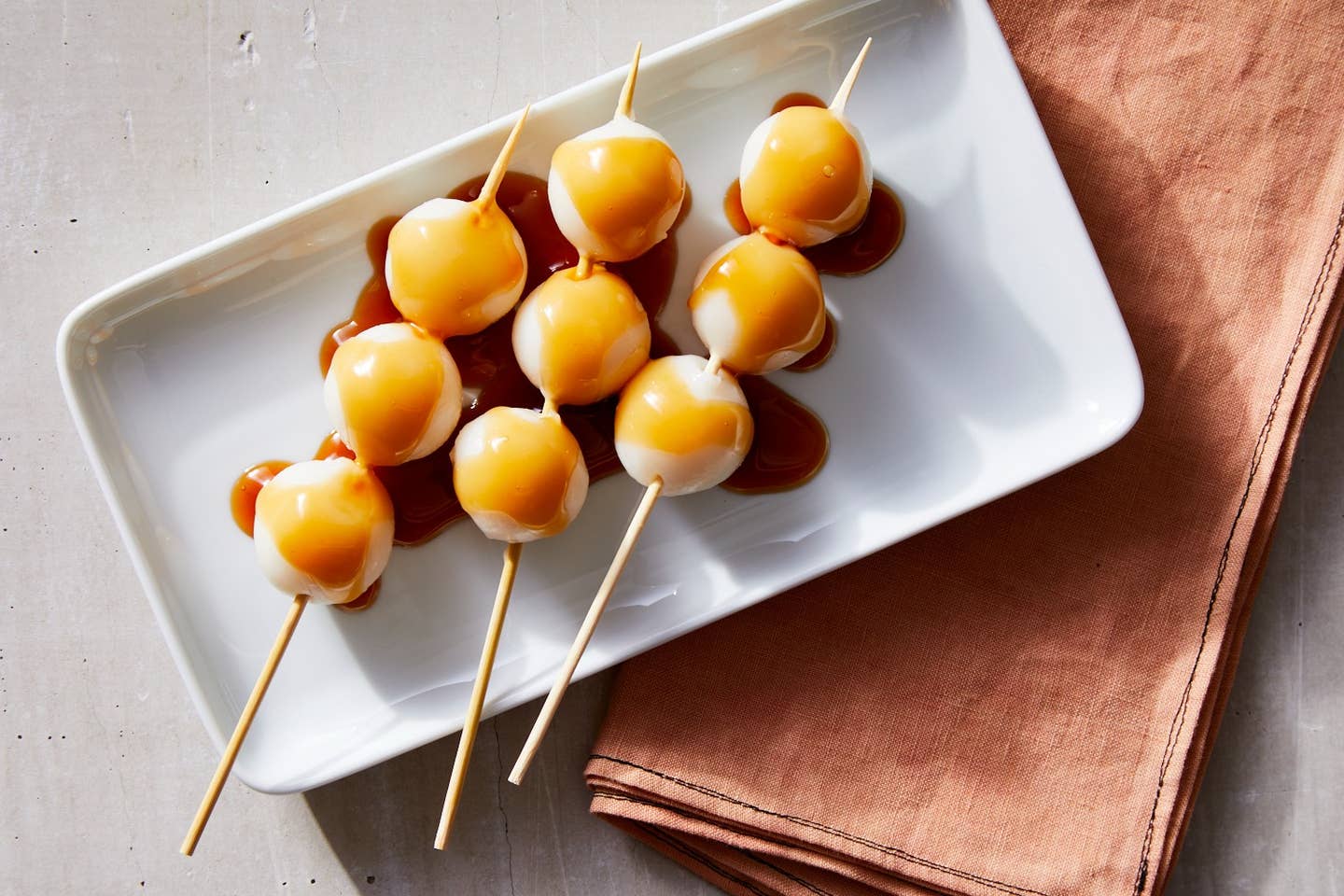
In Japan, Crispy Tempura and Crunchy Celery Get Their Own Texture Descriptors
Thanks to a poetically broad range of onomatopoeic terms.
It’s commonly said that the Japanese language wields more food-describing onomatopoeia than any other. These adjectives capture the perceived sounds different foods make when we eat them. Saku saku! Fuwa fuwa! According to estimates, there are 445 such words in the Japanese language.
“English has only slightly more than 130 words to describe the way foods feel in our mouths,” reports Kendra Pierre-Louis in Popular Science's exploration of food texture in its latest issue themed around taste. She notes that, in the English language, “most—like crackle, crack, crisp, crunch, and snap—refer to the sensation of biting into something firm. You’d be hard-pressed to find someone describing a delicious meal as going squish or splat.”
It goes without saying that all cultures value their food traditions, but I’d venture to offer the (perhaps biased) opinion that Japan’s focus borders on obsession. Japanese television channels from Asahi to NHK ceaselessly broadcast a stream of shows featuring restaurants, competitive eating, and regional dishes. Food companies constantly innovate products like beer cans that foam upon opening (that famously sold out within two days) and a potato chip for every season and every region (Okinawan citrus!). For a country that emphasizes food so much, it is only natural that there is a vocabulary to match.
A greater range of descriptors allows for greater nuance and specificity in description. After all, textures vary widely across foods. And though a lettuce leaf and a kettle chip might both be described as crunchy, their mouthfeels differ considerably.
It would be a herculean effort to list all of the Japanese onomatopoeia describing food textures, but we can start with a tour of our kitchens to identify some of the most common ones. And let’s not forget that many of the most delicious dishes often take on multiple (think brownies, with their crackly top, chewy corners, and fudgy interiors). Here’s a look at some wide-ranging textural sensations.
Saku saku
The box of Walkers Shortbread that might be in your kitchen pantry is saku saku. Saku saku denotes a crispiness that is also rich (without being moist). Shortbread, tempura, and kettle chips are saku saku, but a celery salad is definitely not. For the same reason, flaky palmiers and croissants are also saku saku.
Use it in a sentence: Don’t overwork the dough if you want your cookies to turn out saku saku.
Shaki shaki
In direct contrast to the richness that defines saku saku foods, shaki shaki foods are refreshing and healthful. All of the crunchy fresh vegetables in your kitchen are shaki shaki. Think the juicy crispness of an Asian pear, or the satisfying bite of a green apple.
Use it in a sentence: Let’s order the shaki shaki cabbage salad.
Kari kari
Kari kari is a very specific crispness describing food that has been dried or baked so that the fats have rendered—or foods that have been crisped in fat. Kari kari is used often to describe the brittle crispiness of roasted chicken skin, or slices of fried American bacon.
Use it in a sentence: The bacon has been frying for so long that it’s turned kari kari.
Pari pari
This refers to a light and delicate crunch, like that of sembei, or Japanese rice crackers. If we are talking potato chips, think classic Lay’s or Pringles, rather than the kettle chip variety. The crackle of the thinnest outer layer of a spring roll is also pari pari.
Use it in a sentence: These chips are so light and pari pari—perfect for adding some crunch to a salad!
Fuwa fuwa
This is the sound used to convey airy fluffiness. Imagine soft and pillowy foods, like pancakes , marshmallows, and chiffon cake. When done right, the eggs in your refrigerator can be transformed into a light and jiggly fuwa fuwa omelet.
Use it in a sentence: For the most fuwa fuwa pancakes, beat the batter briskly to incorporate air.
Mochi mochi
This refers to foods that are dense and chewy. Bubble tea pearls, the tendon in your bowl of pho, and (of course) mochi are all considered mochi mochi.
Use it in a sentence: The chewiness of mitarashi dango’s mochi mochi texture makes them fun to eat.
Toro toro
Rich, melting dishes are toro toro. Many comforting foods fall into this category: a gooey chocolate lava cake, a quivering macaroni and cheese, or a slow-braised slice of pork belly. Takoyaki, diced octopus enveloped in savory wheat flour-based batter, is another toro toro dish.
Use it in a sentence: These short ribs are so toro toro that they melt in your mouth.
Neba neba
A beloved texture in Japanese kitchens, neba neba foods are viscous—so much so that they can form threads between the dish and your utensil. Natto (fermented soybeans) is perhaps the most well known, but okra and nagaimo (also known as Chinese yam) are also neba neba.
Use it in a sentence: Combining neba neba foods like wakame and natto is so refreshing in the summertime.
The nuances of these adjectives capture multitudes. Take them with you the next time you’re contemplating between a shaki shaki apple or a fuwa fuwa slice of cake.
Keep Reading
Continue to Next Story










